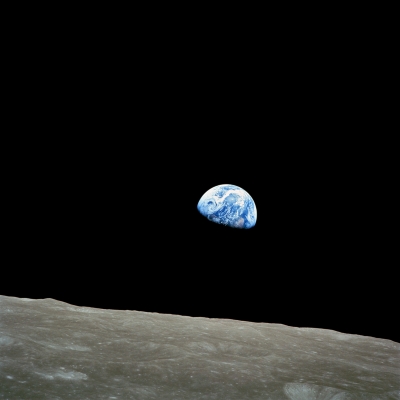
Before landing humans on our moon, one of the important points of consideration, obviously, were the landing sites. In response to this need of obtaining detailed photographs of potential Apollo landing sites, NASA’s Lunar Orbiter program was born. The plan included a series of three-axis stabilized spacecraft to be inserted into lunar orbit, with each of them comprising a main engine and four solar panels.
The first of these was the Lunar Orbiter 1, designed primarily to photograph the smooth areas of the lunar surface. For this, it was fitted with a Eastman Kodak imaging system that weighed 68 kg.
Spy turns scout
The system, which employed both wide and narrow-angle lenses, had the ability to develop exposed films, scan the images and relay them back to Earth. The Eastman Kodak camera flown on the Lunar Orbiters, in fact, had been originally developed by the National Reconnaissance Office (NRO) and used in spy satellites – a truth that was revealed only after the Cold War ended.
While imaging was the primary objective, the spacecraft was also equipped with other instruments to collect data regarding radiation intensity and micro-meteoroid impact, among others. Launched on August 10, 1966, it was placed in an Earth parking orbit before being fired towards the moon.
Stumbling blocks
During its cruise to the moon, the spacecraft experienced failure to its Canopus star tracker (probably due to stray sunlight) and overheating. The former issue was resolved by navigating with the moon as the reference, and the latter was taken care of by orienting the spacecraft at a different angle off the sun.
On August 14, Lunar Orbiter 1 was injected into an orbit around the moon and began working on its objective of photographing nine potential Apollo landing sites, seven secondary areas and some sites on the far side of the moon. It successfully completed this work by August 28, with over 200 images to boast about.
Even though some of the early high-resolution images lacked quality due to smearing, the mission was largely successful as it was able to capture images covering over 5 million sq.km. of the moon’s surface. While the wide-angle images taken by this system showed resolutions up to 0.5 km, the narrow-angle pictures were accurate up to 60-80 m.
First Earthrise
Among these photos was that of the first Earthrise, captured unintentionally. During its 16th orbit around the moon on August 23, Lunar Orbiter 1 took the first photograph of our Earth taken from the moon. The image, which was shot just before the spacecraft was about to pass behind the moon, shows the crescent of the Earth. The image data was transmitted by Lunar Orbiter 1 and received at the NASA tracking station at Robledo De Chavela near Madrid, Spain.
Lunar Orbiter 1 continued working, turning its attention away from photography and focusing instead on engineering goals from September 16. The spacecraft’s condition, however, deteriorated by October 28, forcing the ground controllers to command it to impact onto the lunar surface.
On October 29, on its 577th orbit around the moon, Lunar Orbiter 1 crashed on the moon’s far side to prevent its transmission from interfering with the Lunar Orbiters to come. By the time the Lunar Orbiter program, which consisted of five orbiters, came to an end, 99% of the moon’s surface was photographed down to a resolution of 1m!
Old and new
As for the first Earthrise photo, it proved to be a remarkable image, despite the fact that the image released then was starkly black, wide and had poor resolution. The full resolution of the image wasn’t obtained from the mission data up until 2008.
The Lunar Orbiter Image Recovery Project at NASA Ames Research Center went about their task then, obtaining original mission data from tapes and restoring it to an operational condition by combining modern electronics with 1960s era parts. The result was a beautiful high resolution image of the first Earthrise photograph, a touched up version of which has been used with this story.
Picture Credit : Google

